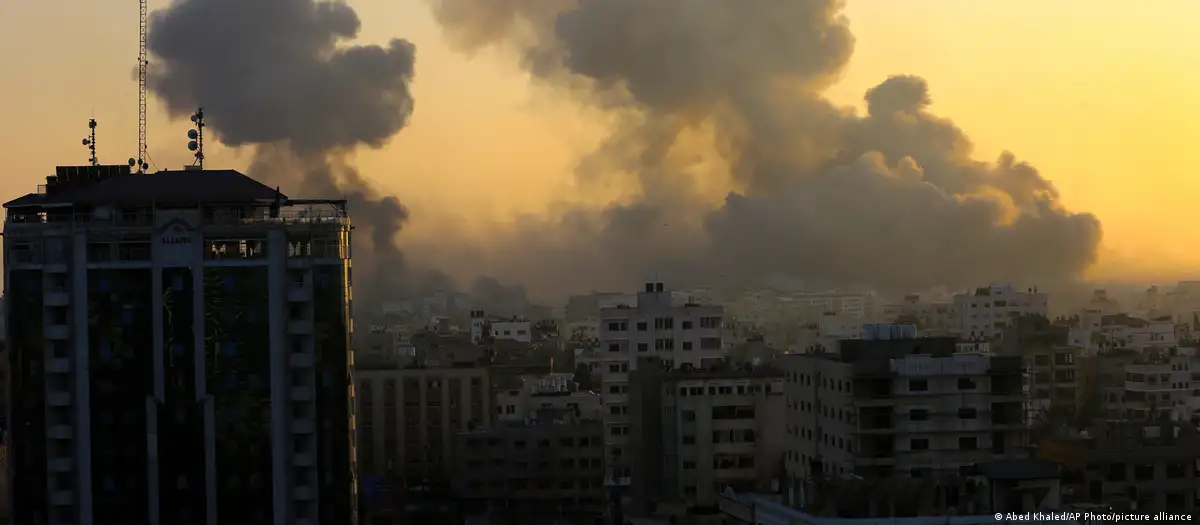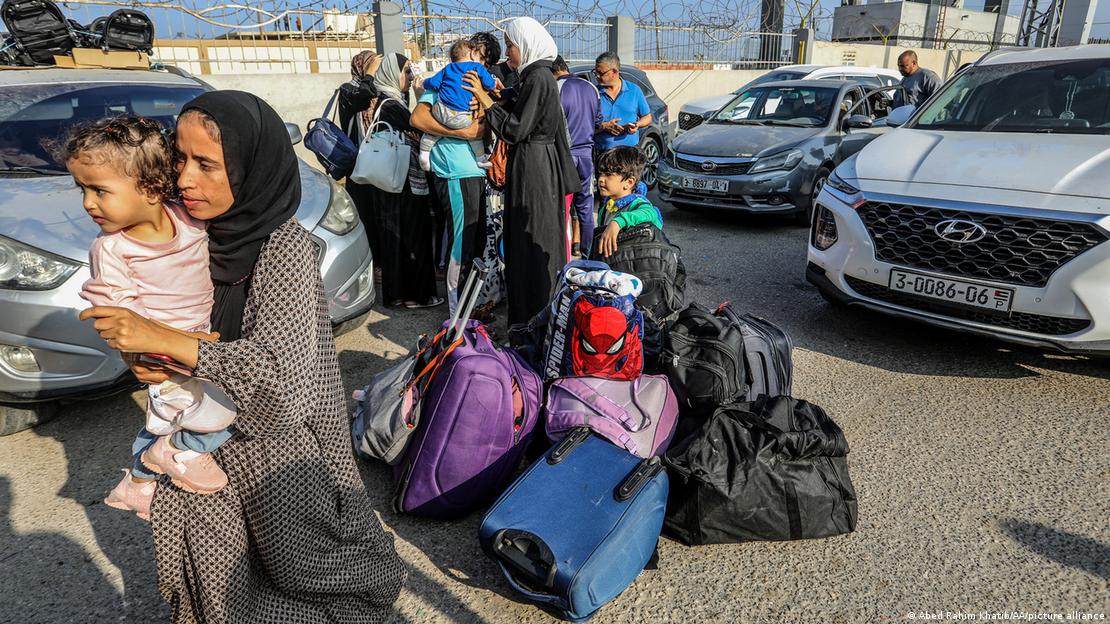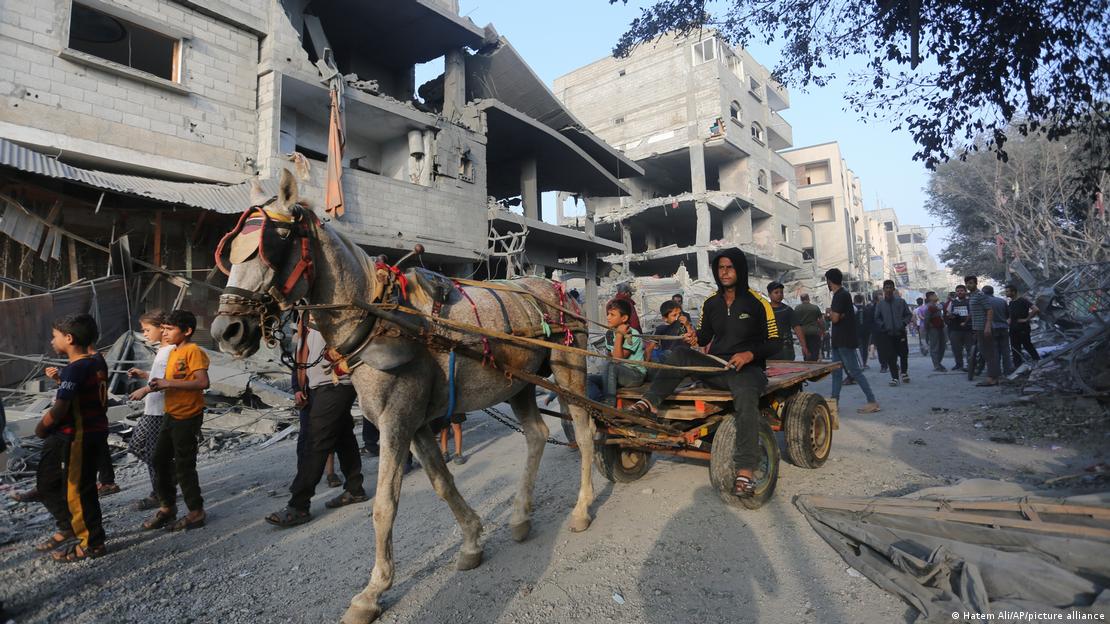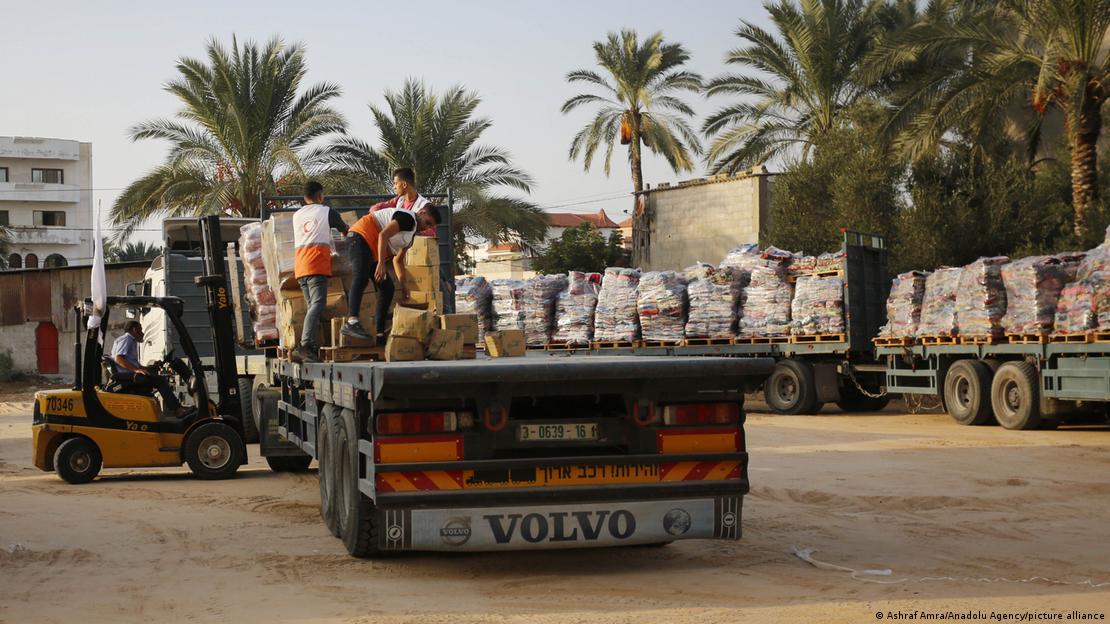Five scenarios for the future of Gaza

The mass killings and atrocities committed by Hamas and other Gazan militant groups on 7 October compelled Israel to declare war, which has already lasted nearly four weeks. Israel's central war aims, according to Prime Minister Benjamin Netanyahu, are to retaliate and crush Hamas in the Gaza Strip. This will not be easy.
Speaking before the Knesset Foreign Affairs Committee on 20 October, Defence Minister Yoav Gallant announced that the Israeli military operation against Hamas could last for months. But after the military mission, he said, "a new security regime" will be established in Gaza and "Israel's responsibility for day-to-day life in the Gaza Strip" will end.
He did not explain what this post-war situation could look like in concrete terms, who would govern the coastal territory, or who would provide security.
The issue of the future cannot be postponed
At present, international attention is naturally focused on efforts to prevent a regional military escalation, free the more than 200 hostages still held in captivity by Hamas and alleviate the catastrophic humanitarian situation of the civilian population in the Gaza Strip.
Nevertheless, the question of possible future perspectives for Gaza and its civilian population of 2.3 million cannot be postponed. Israel's military action is quickly determining facts on the ground and the international community needs to simultaneously define its own role and responsibilities.

Five possible scenarios
At present, five different scenarios for how the situation in Gaza could develop seem most plausible. These scenarios are not mutually exclusive and could well overlap or follow one another.
Scenario 1: Tightened closure
The first possibility is at least a partial return to the prewar status quo, but with an even more heavily secured border between the Gaza Strip and Israel, enlarged restricted zones inside Gaza, and a continuation of the nearly complete blockade imposed by Israel on 8 October.
This scenario could result from the acknowledgement that Hamas – which is deeply rooted in parts of Palestinian society and boasts an extensive tunnel system, numerous military and political cadres, as well as leadership structures spread abroad and in the West Bank – cannot be defeated militarily in a highly asymmetric conflict, despite far superior Israeli firepower.
In this scenario, Israel would have to live with a weakened Hamas in the Gaza Strip but would not be willing to enter into indirect agreements with it, as it had done in recent years. Moreover, Israel would seek to further strengthen its military and intelligence control on land, sea, and air and permanently close all border crossings into Gaza.
This would mean no imports and exports to the Gaza Strip, no permits for Gazan laborers and businesspeople to enter Israel, and no medical referrals to the West Bank or Israel. Israel would also permanently cut off electricity and drinking water, forcing the Gaza Strip to secure all such necessary supplies via Egypt.

Barely viable even before the war
Israeli Foreign Minister Eli Cohen announced that at the end of this war, "not only will Hamas no longer be in Gaza, but the territory of Gaza will also decrease". The current massive bombardments in the northern and eastern Gaza Strip suggest that this is primarily about a significant expansion of the no-go areas along the border fence with Israel. A larger part of the northern Gaza Strip, including its historic capital, Gaza City, could remain mostly destroyed and uninhabitable, with all economic life and agricultural activity halted.
Even before the outbreak of the latest war, around 35% of Gaza's agricultural land could not be cultivated due to the restricted zone imposed by Israel. The heretofore heavily circumscribed access to Gaza's coastal waters could also be completely denied, thus bringing fishing to a standstill – one of Gaza's few, already severely reduced sources of income and food supply.
UN warnings
The Israeli closure of Gaza, which has been ongoing since 2006, but was intensified after Hamas came to power in 2007, combined with repeated armed confrontations, has already thoroughly destroyed the local population's livelihood.
Even before the current military escalation, 80% of were Gazans dependent on international support. Of course, Hamas' prioritisation of its military capacities and the maintenance of the "resistance" also contributed to this situation.
Reconstruction and, above all, economic recovery would be impossible under the conditions of a total blockade, making local residents completely dependent on humanitarian aid. A considerable part of the population would remain permanently internally displaced.
Israel would try to shift the responsibility for feeding the population to Egypt and the international community. Gaza would remain permanently separated from the West Bank; a two-state settlement would become impossible.

Scenario 2: A new Nakba
An even bleaker scenario involves the permanent expulsion of hundreds of thousands or even millions from the Gaza Strip. Palestinians fear a new Nakba (Arabic for catastrophe).
This is the name given to the flight and displacement of the Palestinian civilian population in connection with the establishment of Israel and the Israeli-Arab war of 1948. Many were filled with trepidation at Israel's October 13 call for the evacuation of northern Gaza, without a time limit or guarantee of return.
Meanwhile, new tent camps have sprung up in the town of Khan Younis, in the central Gaza Strip, to house some of those fleeing the north. Fears are also fueled by corresponding demands from representatives of the Israeli right who explicitly evoke the Nakba.
Likud deputy Ariel Kallner, for example, tweeted on 17 October, "Right now, one goal: Nakba! A Nakba that will overshadow the Nakba of [19]48. A Nakba in Gaza and a Nakba for anyone who dares to join!"
Evacuation to the Sinai?
Deputy Speaker of the Knesset Nissim Vaturi, also of the Likud party, demanded, "Nakba?! Expel them all. If the Egyptians care so much for them – they are welcome to have them wrapped in cellophane tied with a green ribbon."
Moreover, an internal paper from the Coordinating Ministry for the Intelligence Services recommends the "evacuation of the civilian population from Gaza to Sinai" as an "executable option" that would "yield positive, long-term strategic outcomes for Israel". Tellingly, Prime Minister Netanyahu lobbied Europeans to pressure Egypt into accepting refugees from Gaza. Reversing an earlier stance by the United States government, the National Security Council's Strategic Communications Coordinator John Kirby announced that the U.S. would talk to Egypt about the possibility of hosting Palestinians fleeing the Gaza Strip.
Arab states have made it clear that they are not willing to take in Palestinian refugees as this could once more result in their permanent displacement. Yet a further deterioration of the humanitarian situation in Gaza could incite a mass rush to the Rafah border crossing with Egypt that the latter would struggle to contain even through force.
Refugee camps would then spring up in the Sinai, and new migration routes to Europe would quickly emerge. The Gaza Strip would be partially depopulated and the future of those who remain uncertain.
Scenario 3: Permanent re-occupation
A third outcome could entail a permanent (or long-term) Israeli re-occupation, possibly including a return of settlers to the Gaza Strip, as some politicians of Israel's religious-right already demanded before the current war.
In view of the above-mentioned statements of the Israeli defence minister, this scenario seems to contradict the government's interests, however. It would expose Israeli troops (and settlers) to attacks from insurgents operating among an alienated population and would increase rather than decrease Israel's responsibilities and costs.
Still, long-term occupation might become a default option if no other actor is willing or capable to assume responsibility for control of the Gaza Strip and provide lasting security toward Israel.
Scenario 4: International troops and administration
Scenario four would involve the deployment of a robust international force to ensure comprehensive disarmament and security, with the Gaza Strip placed under an international interim administration. This would require a United Nations Security Council resolution under Chapter 7.
This seems rather unlikely in the foreseeable future given the deadlock between the council's veto powers – the U.S. on the one hand and Russia and China on the other. Moreover, international enthusiasm for robust peacekeeping missions has also declined significantly in recent years.
Even if an international agreement could be reached, Israel would in all likelihood still insist on its own security measures, buffer zones, and an impermeable border (as in Scenario 1).
Moreover, the U.N. and/or troop-contributing states would demand that a deployment be embedded in a political conflict resolution process and, in the medium term, followed by a transfer of control over Gaza to the Palestinian Authority (PA). Israel is likely to refuse both, especially under the current religious-right government. Reconstruction and economic recovery would remain difficult under such conditions.

"The only solution is the initiation of a true peace process"
Mustafa Barghouti, general-secretary of al-Mubadara – the Palestinian National Initiative – and leading civil rights activist, talks about the ongoing war in Gaza and his vision for peace
Scenario 5: Negotiated opening
Finally, there remains the possibility of a controlled opening of the Gaza Strip within the framework of a regional arrangement and as a first step toward a negotiated settlement. In this case, too, there would have to be regional and international security guarantees.
In addition to the U.S., Israel's neighbours Egypt and Jordan, but also Qatar and those states that have normalised their relations with Israel within the framework of the Abraham Accords – first and foremost the United Arab Emirates and Morocco – would have to assume responsibility.
This would also give the latter the opportunity to underpin the accords, which are controversial among their own populations, in a way that allows for an actual peace dividend.
Saudi Arabia, which harbours ambitions as a regional leader and with which Israel still wants to cooperate more closely, could also play a prominent role. Qatar and Egypt would have to employ their leverage to influence any remaining militants in Gaza. In return for relinquishing power, exile could be agreed for remaining leaders.
No security without a political solution
Under international law, the Gaza Strip (as well as East Jerusalem) is part of the territory of the "State of Palestine", as the International Criminal Court affirmed in February 2021. Accordingly, under this scenario, the administration would have to be transferred to the PA. The latter would have to be empowered and toughened up in order to be able to fulfill that role, however.
It would also need new democratic legitimation – in Gaza Strip as well as the West Bank – as no elections have been held at the national level since 2006. Indeed, about half of those Palestinians eligible to vote today have never had the chance to cast their ballot.
At the same time, the PA's remaining personnel resources in Gaza, which include some 60,000 former PA employees who have been sitting at home since 2007, could be used and contribute their administrative experience toward the rebuilding effort. Civilian employees of the current administration who were not involved in Hamas' military activities should also be integrated.
The previous security regime was based solely on military approaches. Yet Israeli drones, reconnaissance balloons, watchtowers, fences, walls, or recurrent military operations did not prevent Hamas' devastating October 7 attacks.
A new security regime must, therefore, be based on a politically negotiated settlement. This would speak to Israeli and Palestinian defence and safety concerns as well as ensure the free movement of people and goods, thereby also enabling reconstruction and sustainable development.
What needs to happen now
The Israeli government has not yet presented a plan for the day after the military confrontation. It is therefore all the more important that relevant international actors position themselves on Gaza's possible future.
Otherwise, the unconditional solidarity with Israel that the U.S. and some European governments have pledged could be interpreted as a carte blanche for Israel's government and specifically its right-wing religious components.
This would be fatal if Israel consequently opted for one of the first three scenarios, which in various ways run counter to international law and offer neither development prospects for the population of the Gaza Strip nor promise lasting security for the Jewish state.
New breeding ground for militant groups?
Rather, they would undoubtedly constitute fertile ground for existing and new militant groups. The risk of further regional destabilisation, especially in Egypt, and regional conflagration would also remain extremely high.
This leaves the fourth and fifth scenarios, both of which could offer new perspectives for Gaza and its predominantly young population.
The core component would have to be a new security regime oriented toward the long-term, effective protection of the Israeli population from attacks, the safety of Gazans, and the realisation of their right to free movement and development.
This can only be guaranteed within the framework of a negotiated arrangement and a regionally and internationally coordinated and supported transitional regime.
The U.S. and the Europeans should take the lead in bringing about such an arrangement and act urgently, as a prolonged military campaign might reduce its prospects. In doing so, they could build on past proposals and mechanisms, such as the European Union's Border Assistance Mission (EUBAM) to Rafah, which was created in 2005 to monitor that crossing.
Seeking a sustainable long-term arrangement
Although unable to carry out its original purpose since 2006, the mission, with an annual budget of over 2 million euros, remains on "stand-by" and could play a role once more. Egypt would have to effectively stop the smuggling of arms through the remaining tunnels under the border.
And instead of the sea blockade, which the Israeli navy has repeatedly enforced by firing, amongst others, on fishing boats, there could be an international patrol, similar to the U.N. Interim Force in Lebanon (UNIFIL) Maritime Task Force, operating only 200 kilometers to the north.
The latter effectively prevents (at least in its area of operation) the supply of arms by sea to Lebanese militant groups.
A similar mission off the coast of Gaza could facilitate important development opportunities by enabling fishing and orderly maritime trade while also permitting Gaza to access its own Mediterranean resources, especially the natural gas deposits off its coast.
The shock of the October 7 atrocities and the resulting high risk of a regional and even international conflagration should serve as a wakeup call to the international community that it is high time to join forces to find a viable arrangement for Gaza.
That could be a first step toward finally settling the Israeli-Palestinian conflict and ensuring peaceful Jewish-Arab co-existence on the entire territory of Israel and Palestine.
Muriel Asseburg und René Wildangel
© Qantara.de 2023
This article was first published by Middle East Institute 3.11.2023.